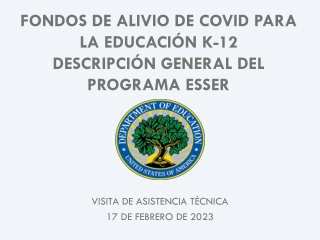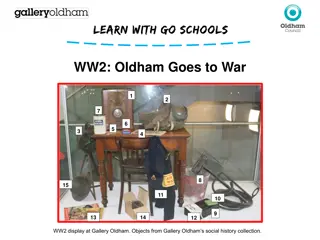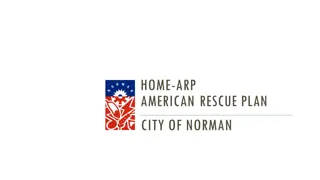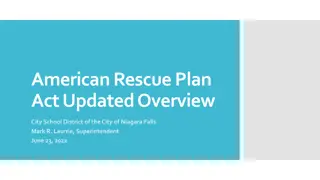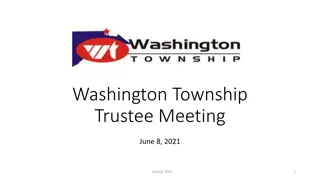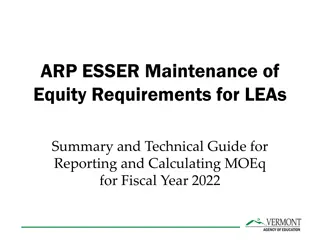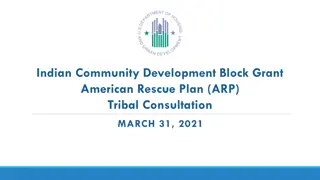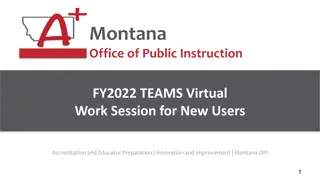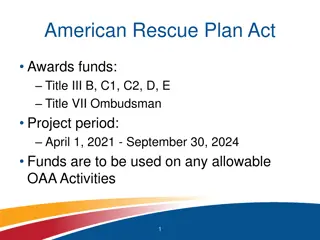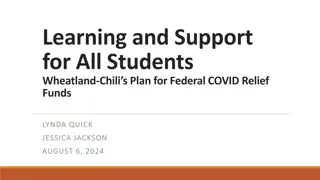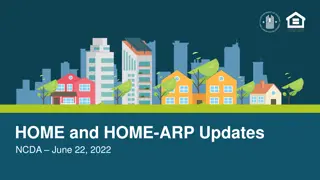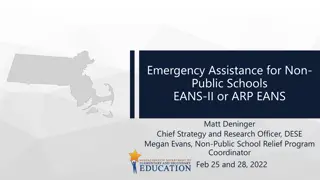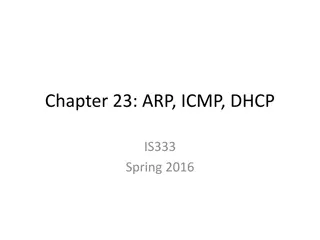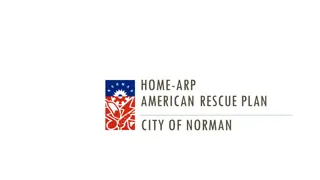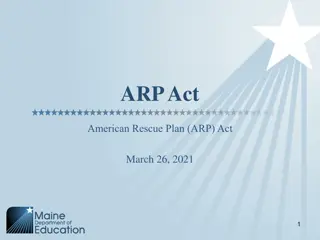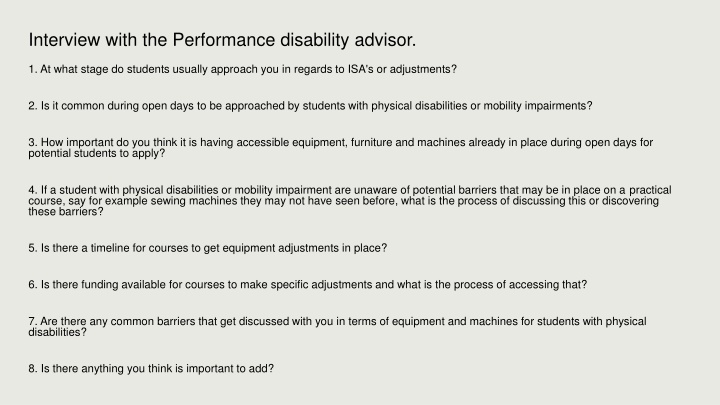
Supporting Inclusivity in Education: Overcoming Barriers for Students with Disabilities
Discover insights from an interview with a performance disability advisor regarding accessibility, equipment adjustments, funding, and common barriers faced by students with physical disabilities. Learn how open days play a crucial role in student decision-making, the importance of accessible equipment, and the process of addressing potential barriers on practical courses. Explore solutions for removing obstacles and promoting inclusivity in education.
Download Presentation

Please find below an Image/Link to download the presentation.
The content on the website is provided AS IS for your information and personal use only. It may not be sold, licensed, or shared on other websites without obtaining consent from the author. If you encounter any issues during the download, it is possible that the publisher has removed the file from their server.
You are allowed to download the files provided on this website for personal or commercial use, subject to the condition that they are used lawfully. All files are the property of their respective owners.
The content on the website is provided AS IS for your information and personal use only. It may not be sold, licensed, or shared on other websites without obtaining consent from the author.
E N D
Presentation Transcript
Interview with the Performance disability advisor. 1. At what stage do students usually approach you in regards to ISA's or adjustments? 2. Is it common during open days to be approached by students with physical disabilities or mobility impairments? 3. How important do you think it is having accessible equipment, furniture and machines already in place during open days for potential students to apply? 4. If a student with physical disabilities or mobility impairment are unaware of potential barriers that may be in place on a practical course, say for example sewing machines they may not have seen before, what is the process of discussing this or discovering these barriers? 5. Is there a timeline for courses to get equipment adjustments in place? 6. Is there funding available for courses to make specific adjustments and what is the process of accessing that? 7. Are there any common barriers that get discussed with you in terms of equipment and machines for students with physical disabilities? 8. Is there anything you think is important to add?
Analysing interview transcript. Key points I learned from the interview. Open days can be fundamental for disabled students choosing or rejecting a university/course. I used Microsoft live word dictate function to transcript the interview live which work very well. I also used my phone as a back to correct any errors on the transcription. Full transcription available on my blog I created a Word cloud from the transcripts for my thematic analysis. Barriers may take time to identify if the student is unfamiliar with processes that will be learned on the course. The disability advisors do not have specialist knowledge of the courses allocated to them. It may become a team effort to identify barriers, but this can take time. Funding can come from DSA or university budgets. Both can take months before funding is received, only then can equipment be ordered. There is no funding for anticipatory adjustments. Funding is based on per student per individual needs and can take months to receive.
Barriers Identified: How can they be removed? Through my ARP I have identified several barriers that I had not considered before. I knew the machines were a problem, but the space and consideration of open days are of such great importance. The next spiral of my research is how easy is it to remove those barriers that are within our control? If we can do this as part of our anticipatory duty, this will give the students a much more positive experience when they do enroll. Action research second spiral. (2023) Authors own
Moving Mood. Moving3Dmachine is an adaptation for industrial sewing machines designed for users with physical disabilities. The traditional use of pedals is replaced by levers activated by the arm, allowing people with reduced mobility to be employed in a sector such as fashion, which employs one in six people worldwide. A system that is easy to attach, removable, and does not need to leave an adapted machine all the time. Our aim is to offer more job and higher education opportunities for people with physical diversity. Promoting their autonomy and contributing directly to society. Find out more about our sewing machines for inclusive production. Moving Mood (2023) Invented by Carlos Espinosa and adapted by Nestor Aparicio, the project was supported by Social Challenges Innovation Platform and funded by the EU to allow the Moving3Dmachine pattern to be downloaded free of charge on the Moving Mood website.. Images from movingmood.com
Moving3Dmachine was printed at LCC due to LCFs LEV system not being operational. With the help and advice from LCF s head sewing machine technician, and the 3D support technician, I was able to build and implement the adaptation to one of our industrial machines. Moving3Dmachine 3D print(2023) Authors own Cutting the rod (2024) Moving3Dmachine applied. (2024)
Video of machine in action (2024) Authors own It works! To lift the foot, using the arm, move the stick to the right. The power the machine, apply pressure from the top down. The harder you push, the faster the machine. The rod is currently too high. I plan to develop this to make it height adjustable. Machine was tested by all the costume technicians. Feedback forms were filled out and the results can be seen on https://sarahmasters.myblog.arts.ac.uk/ Total cost of Moving3Dmachine - 8.43
Bibliography text Barham, P. Greenshields, S. Mitchell, J. (2020) CLIENT PROJECT REPORT CPR2714 Accessible Public Realm: Updating Guidance and Further Research Technical Annex 2: A review of the dimensions of wheeled mobility aids (RQ2) Available at https://assets.publishing.service.gov.uk/media/5e4d412986650c10e4580eb5/accessible-public-realm-annex-2-review-of-the-dimensions- of-wheeled-mobility-aids.pdf [Accessed[ 21th November 2023. Disability Rights UK (2022) Social Model of disability: Language. Available at https://www.disabilityrightsuk.org/social-model-disability- language Accessed 20th November 2023 Imrie, R., 2000. Disability and discourses of mobility and movement. Environment and planning A, 32(9), pp.1641-1656. Available at https://www.researchgate.net/profile/Rob- Imrie/publication/23538979_Disability_and_Discourses_of_Mobility_and_Movement/links/5f113a484585151299a1353d/Disability-and- Discourses-of-Mobility-and-Movement.pdf [Accessed] 8th November 2023. Moving Mood (2023) Sewing machines for inclusive production. Available at https://movingmood.com/en/consulting-services/sewing- machine-for-inclusive-production/#gutenslider-t9apnbhfv-6 Accessed 1st December 2023 Paterson, K. and Hughes, B., 1999. Disability studies and phenomenology: The carnal politics of everyday life. Disability & society, Available at https://www.tandfonline.com/doi/abs/10.1080/09687599925966?casa_token=Xyd9BpWbGqgAAAAA:wpURH6fUO638TrHaL4W5T7Cshjqq0T cGI0ahntBrN3BvPtxjx6_J_EKi2ISuWQR-aWReop_Lt3FcWg [Accessed] 8th November 2023 UAL (2022) Equality, Diversity and Inclusion Annual report 2021/22 Available ay https://www.arts.ac.uk/?a=389423 [accessed] 18th January 2024 University of Oxford (2024) Anticipatory duty. Available at https://academic.admin.ox.ac.uk/anticipatory-duty [Accessed] 20th December 2023
Bibliography Images Bolton, P and Hubble, S. (2021) Support for disabled students in higher education in England Available at https://commonslibrary.parliament.uk/research- briefings/cbp-8716/ Accessed 25th November 2023 Masters, S. (21/11/23) Distances between chairs Masters, S. (21/11/23) Distance between stall Masters, S. (21/11/23)Door to EB 823 Masters, S. (21/11/23) Door width Masters, S (2023) Door Width in EB 823 graph. Masters, S (2023) Lockstitch machine Masters, S. (04/11/23) My Action Research Cycle Masters, S. (21/11/23) Occupied machines Masters, S. (21/11/23) Overlock machine E823 Masters, S (2023) Path between occupied machines and chairs graph. Masters, S. (21/11/23) Pattern cutting table height EB823 Masters, (2023) Width between occupied tables and stalls graph. Masters, S (2024) Cutting the rod Masters, S (2024) Moving3Dmachine applied. Masters, S (2024) Video of machine in action Masters, S. (2023) Action research second spiral.
Bibliography images continued Moving Mood (2023) Sewing machines for inclusive production. Available at https://movingmood.com/en/consulting-services/sewing-machine-for- inclusive-production/#gutenslider-t9apnbhfv-6 [Accessed] 1st December 2023 Rapid Ramp (2023) Table 2 minimum effective clear widths of doors. Rapid Ramp door widths. Available at https://www.rapidramp.co.uk/product- news/the-correct-wheelchair-door-width [Accessed] 25th November 2023 UAL (2019) East Bank. Available at https://www.arts.ac.uk/colleges/london-college-of-fashion/about-lcf/lcfs-move [Accessed] 18th January 2024 UAL (2022) Level 8 floor plan. Available at https://artslondon.sharepoint.com/sites/MediaDepartment/Shared%20Documents/Forms/AllItems.aspx?id=%2Fsites%2FMediaDepartment%2FShared% 20Documents%2FGeneral%2FStratford%2FILLUSTRATIVE%20PLAN%20M%26P%20UPDATED%20LEVEL%2008%20%2D%20220622%2Epdf&paren t=%2Fsites%2FMediaDepartment%2FShared%20Documents%2FGeneral%2FStratford [Accessed] 18th January 2024

